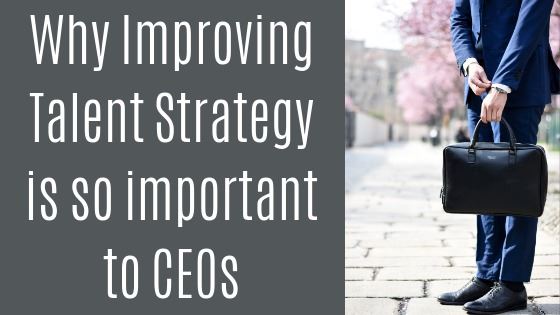"The business of business is people"… and that's all we've got around here.
That statement by Southwest Airlines founder Herb Kelleher has become one of the most recognizable quotes of the past 50 years. The philosophy is what drove Southwest to growth and fame beginning in the late 20th century. Kelleher knew that if he hired the right people, trained them well, fostered a growth environment, and had the right processes for dealing with internal and external stakeholders, customer satisfaction, profits and "LUV" (their stock ticker symbol) growth would follow. As a leader, you've got to find and build people. Then make room for people to build your processes. And the right processes will drive your profits.
Today, however, finding, hiring, and keeping the right talent seems to be increasingly difficult. But with so much data, research, and resources available, why do many organizations still not have it figured out? Does talent strategy consistently fall down the priority list? Are we too caught up in replacing the people strategy with technology that we lose sight of its importance?
As one of the leaders in several organizations over the past 15 years, I feel like it's been a constant battle. My question has always been--What's more important than finding, attracting, and retaining the right people? Are we just too busy and focused on new initiatives to get that part right? I will always argue that there's nothing more important.
You must be wondering if you're focused enough on your organization's talent strategy. Below are ten of the most common challenges that we hear amongst business leaders:
- They are frustrated with employees who are not aligned with the company's vision and strategy.
- They are unclear and confused about "best behaviors" for employee positions that can be translated to all employees in those positions.
- They are baffled by employees who simply can't perform as well as their peers.
- They are afraid that their employees are not performing to their maximum potential and may be costing their company a lot of money.
- They are unhappy with their turnover rate. They know that it could be improved but don't quite know-how.
- They are losing precious time and money in replacing trained employees with rookies.
- They are afraid of being too dependent on a few key employees whose performance can't be replicated by others.
- They are afraid of losing their key employees whose performance cannot be replicated by others.
- They are impatient with their employees' performance which is just not good enough to stay competitive or grow the business as fast as they want.
- They are tired of the exorbitant direct and indirect costs associated with making bad hires.
Do any of those resonate with you? If so, how do you solve for this? The key is to F O C U S. Focus on the few common things that we started with.
What? Hire right.
How? Hunt for the right people rather than just hoping to find them. Use assessments to ensure a cultural, job, and attitudinal fit. Be selective.
What? Onboard and train effectively.
How? Develop processes for onboarding. Have a defined sales process that everyone follows. Invest early in the right people.
What? Foster a growth environment.
How? Create accountability amongst team members not just from management. Give direct feedback. Communicate effectively. Reflect and adjust weekly.
What? Retain top talent.
How? Communicate a clear career path. Recognize both behavior and results. Focus on purpose not profits. Cast the company vision often. Help employees tie individual goals to corporate goals and mission.
The caveat to all of the above is that if the right systems and management are not in place, the right hire, onboarding and environment won't even matter. But how would you know if this is an issue? If challenges repeat themselves, this can be a sign. If exit interviews or recruiting feedback raises red flags, this can be another sign. So what do you do about it? We'd advise assessing the managers who work directly with those new hires. There's a chance… that THEY might not be the right people to help new hires to be successful!
We always recommend beginning with the end in mind. Think through the talent that's needed to fill your bench and hire accordingly. If you know where you want to end up, the map to get there becomes abundantly more clear. To that end, we suggest that you think carefully about what talent your team has and where are opportunities to fill in the gaps. Need help figuring that out? Perhaps an outside consultant with an objective perspective makes sense.

Dave Schwallier brings many years of sales and marketing experience to the Lift Consulting team. His insight and expertise shine through in his passion to help others.






